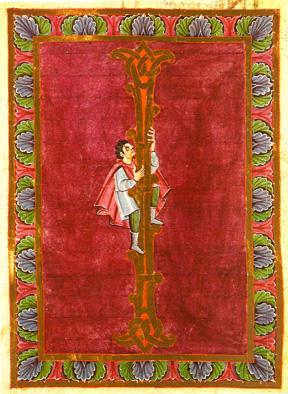Â
Sam Abrams: Theatre and literature
With The Calligraphers, the great novelist and theorist of literature, NĂşria PerpinyĂ , has felt a powerful seduction of written and performed theatre. (…) It is a work of temperament and ambition. The text can be read as a reasoned diatribe against the university system, as well as a brave defense of the artistic creativity.
Ada Castells: Pursuit of excellence.
The book raises questions about: the crisis of the arts, the subordination of the world of knowledge to the business world, the discrediting of excellence and ridiculous bureaucracy. (…) NĂşria PerpinyĂ likes to walk on the edge of genres.
Ramon Rubinat: A twilight story.
Witnessing our legacy (which is more than five thousand years old and is going to fade in an elementary a silly nothing) turns our death into an unfair procedure (…). The playwrights make us to face the drama of life: it is not fair and we rebel… in a sterile way, here is the tragedy. Behind a smile, which is a brief disconnection, there is the defeat. We laugh because it’s the last thing we have.
The actors / characters:
Imma Colomer: exceptional. A cuneiform way of speaking… what she says, besides being able to feel it, I would say we can also see it. This actress has a sculptural diction.
Pep Planas was great. The actor perfectly conveys us the inconsistency of a mankind and his speeches.
Ferran FarrĂ© is agile (…) His role is to maintain the balance of the triangle formed by erudition, seduction and transgressive discourse.
NĂşria Casado’s function is the one of a microphone; when she approaches to other characters, they are allowed to speak; (…) she is a perfect, moderate character.
Xavier Pla: A signature and a letter
The Calligraphers is a play relating to letters in the double sense of the word. On the one hand, about the vaunted crisis of the humanities. On the other, it is a play about writing and its interpretation, about copyists, papyri, manuscripts, pens and printing press. (…) The author’s facility in setting a field of study, observing it, theorizing it, contradicting it, and then recreating it to the limit is completely admirable.
Emili Balldelou: Doctor Doctori lupissimus
The characters remind us of endangered aristocrats of Chekhov: like in The Cherry Orchard, the department of ancient writing disintegrates as a part of a world that already belongs to the past.
Carme MirĂł: The Calligraphers
In the novel A House to compose (2011), the writer from Lleida explored the emotional structures that support the art with a vivid imagination. NĂşria PerpinyĂ , a professor of literary theory, plans her own creative plot. She composes architecture, music, lyrics and now, a theatre play in five acts.
The Calligraphers is a chronicle of the stillness of writing confronted with the vital chaos that occurs in the academic life, and the complex relationship between a teacher and a disciple. (…) The contrariety and the contradiction persistently manifest themselves in the work of Perpinyà .
Â
THE CALLIGRAPHERS: A READER
NEWSPAPERS AND LITERARY MAGAZINES
CASTELLS, Ada. “Un tros de conversa amb Núria Perpinyà ”. Avui, 24-V-2012. [7 PDF]
MIRĂ“, Carme. “Els Cal.lĂgrafs”. Sonograma Magazine.  [6 PDF]
CASTELLS, Ada. “Recerca de l’excel.lència”, La Vanguardia, 29-II-2012.
VĂ€ZQUEZ, Gerard. “Els Cal.lĂgrafs”. Hamlet, 18. 15-VII-2011.
CASAMAJĂ“, Gemma. “Els Cal.lĂgrafs”. Ara. Time Out, 30. 19-25 juny 2011.
ABRAMS, Xavier. “Teatre i literatura”. El Mundo. 9-VI-2011. [5 PDF]
PLA, Xavier. “La firma i la lletra”. Avui. 6-VI-2011. [4 PDF]
RUBINAT, Ramon. “«Els cal·lĂgrafs», de NĂşria PerpinyĂ . Impressions d’un espectador trĂ gicament satisfet”. Arts. Revista del Cercle de Belles Arts, 33. 2010. [3 PDF]
BALLDELLOU, Emili. “Doctor doctori lupissimus”. Segre. 28-X-2010. [2 PDF]
BANYERES, Roser. “És una obra atĂpica, original i actual que crida l’atenció”. Segre. 14-XII-2010. [1 PDF]
METAUTE, Lorena. “Entrevista: Núria Perpinyà ”. Segre. 31-I-2010.
INTERNET’S BLOGS
BARBANY, Pep, “Lluita intel.lectual sense Ă nima”, Attrezzo. El teatre dins d’un bloc. 14-XI-2010.

